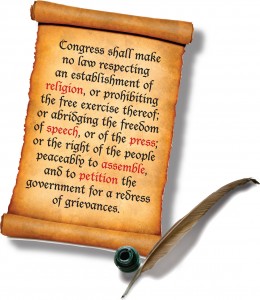Widgetized Section
Go to Admin » Appearance » Widgets » and move Gabfire Widget: Social into that MastheadOverlay zone
Engaging with Constituents After Elections
By: Larry Schooler
Both major-party presidential candidates are searching for ways to distinguish themselves from one another in the starkest possible terms—“repealing Obamacare,” “keeping us moving forward rather than taking us backward,” and so on. 
But they have this much in common: they both favor talking directly with voters. Granted, the more intimate, real conversations between presidential candidates and voters tend to happen earlier in their campaigns, but some of the more memorable moments in presidential campaigns happen when candidates deviate from their scripts laden with talking points and listen to what voters are saying.
Witness then-candidate Bill Clinton, just before the New Hampshire primary in 1992, listening to a woman cry as she admits she can’t afford the drugs she needs to survive. Clinton’s reaction? He cried, hugged and consoled the woman, and then made health care reform the signature public policy effort of his first term.
So, as the campaign enters the home stretch, perhaps the candidates could find common ground on a new way forward in engaging with their constituents—after the election. After all, it makes perfect sense for a candidate to hold campaign-related social media chats, focus groups, or “town hall meetings” (a disgrace to the original New England town hall meetings, where the public actually had a say in town decisions). They want to connect with people in the hopes they’ll vote for them. But once in office, Presidents—and, indeed, other officeholders at virtually all levels of government—seem strikingly less interested in what their constituents have to say. The meetings become less frequent or disappear; the social media might continue, but the conversation typically becomes one-way.
What happens when it becomes two-way? In Recife, Brazil and several communities around the world, thousands of local residents have participated in their local budgeting process—confronting tough decisions, showing lawmakers the projects they support and making it politically safer to pass the budget. Across Austin, Texas, bystanders stopped at mobile kiosks to share their views on what kind of city they envision in the future; one visually impaired student spent 30 minutes providing his input in a highly visual exercise. The result: a unanimously adopted comprehensive plan for the city, its first in over 30 years.
So the conversation politicians have with their constituents need not shift from two-way to one-way after the election, and federal officials could take a cue from cities. The National League of Cities reports that most local elected officials see important benefits to public engagement such as “developing a stronger sense of community, building trust between the public and city hall and finding better solutions to local problems.” Similarly, the American Planning Association found that 75% of Americans believe engaging citizens through local planning is essential to economic recovery and job creation. After all, if a city responds to the needs and market demands from its citizens, that city would more likely see development occur that adds to the tax base, entices new residents, and creates jobs in the process.
Elected officials ignore their publics at their own peril. Some angry citizens sue to be heard and may lose the battle over the policy but bleed the public’s coffers in legal fees. Others mount recall elections, which also prove costly, tend to divide the community, and drive politics into gridlock.
The First Amendment to the U.S. Constitution prohibits Congress from making any law that abridges or impedes the right of the people “to petition the Government for a redress of grievances.” It therefore behooves officeholders to facilitate that process—enabling anyone to offer input, regardless of whether they are courageous enough to deliver a speech at a hearing scheduled just before a vote. Public hearings aren’t enough; elected officials need input from others who hold a deep stake in the outcome of a decision but prefer to talk in smaller groups, at lower volumes, with fewer diatribes and more offers of compromise.
Undoubtedly, it would take investments in time, money, and other resources to enable people around the country to participate more meaningfully and deeply in their democracy. But training, tools and techniques abound—from text-message based polling and moderated online discussions to game-based planning processes and citywide and statewide dialogue facilitation teams.
Across the country, Americans seem exhausted by campaigns that demonize and divide. Perhaps candidates now have a vision around which they can unite: enable all Americans affected by a decision to affect that decision.
________________________________________________________________
Larry Schooler is President-elect of the International Association for Public Participation (United States of America) and a community engagement consultant based in Austin, Texas; he mediates public policy disputes and facilitates community dialogue. He is a Fellow at the Center for Public Policy Dispute Resolution at the University of Texas and an adjunct lecturer at Southern Methodist University. He also mediates cases for the U.S. Department of Defense. He is the author of a forthcoming book on truth and reconciliation commissions in the United States. Larry is married to Jolie Schooler and has a one-year-old son, Sammy.
Image courtesy of http://www.jrcls.org/news/item.php?num=1010.


Follow Us!